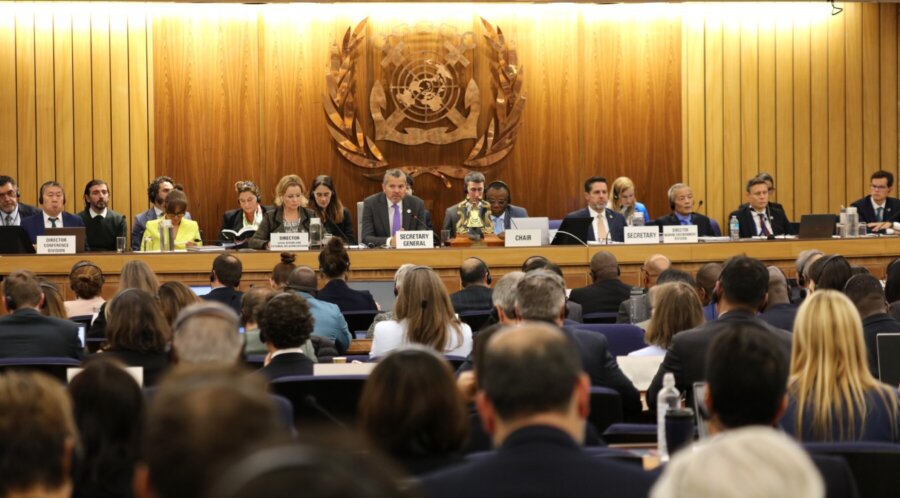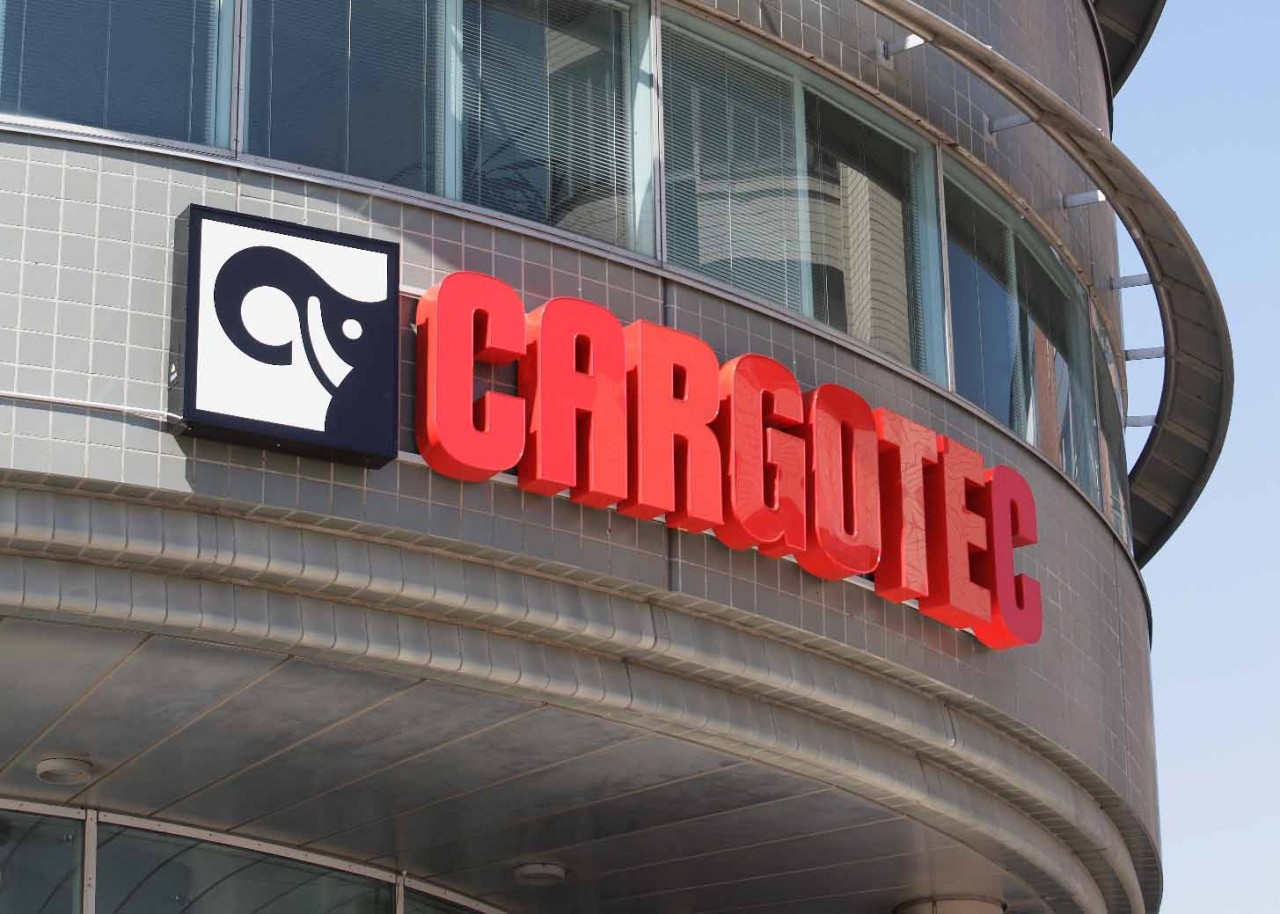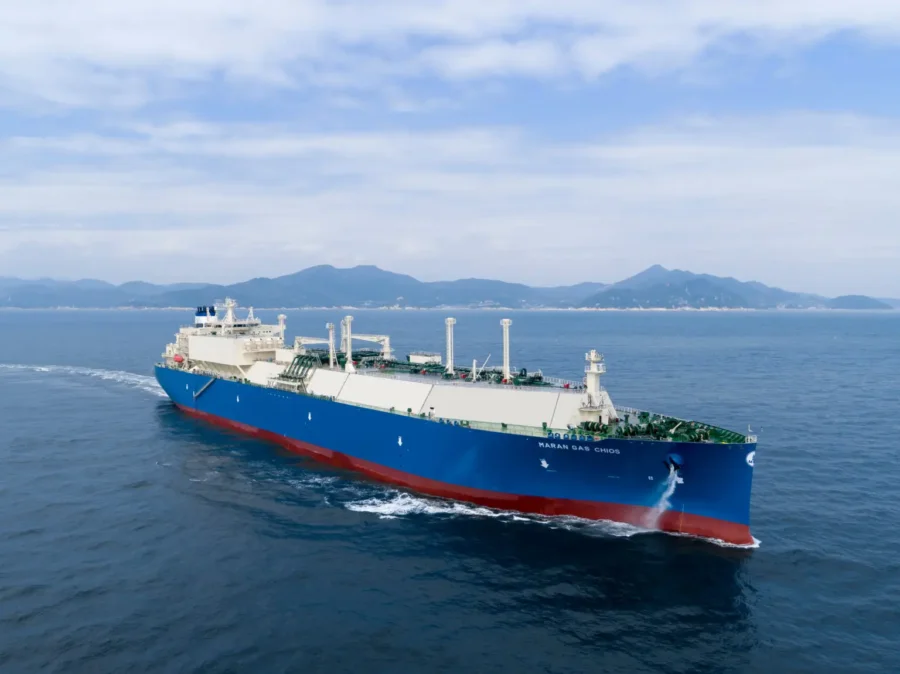

MacGregor systems provide flexible cement handling for new Japanese cement carrier
A new self-loading/unloading cement carrier for Japanese Taiheiyo Engineering Co will feature MacGregor cement handling systems designed to carry three grades of cement at a rated capacity of 1,000t/h
MacGregor, part of Cargotec, has secured a new order for autonomous loading and unloading systems for an 8,700 dwt cement carrier to be built for Japanese shipowner Taiheiyo Kisen Kaisha Ltd.
“The totally enclosed cement handling arrangements will ensure flexible, efficient and clean cargo operations,” says Anders Berencsy, Sales Manager, Selfunloaders at MacGregor. “An additional benefit is that the computer-controlled systems are programmed for automatic operation by just one person.”
The 109m vessel will have four cargo holds, each divided into two compartments. The cement handling system is designed to carry up to three grades of cement in each shipment.
During loading operations, the ship’s deck-mounted receiving aeroslide is connected to the shore facilities by flexible bellows; loading can be achieved on either side of the vessel.
The cement is then transferred to two short intermediate aeroslides by means of hydraulically-actuated flow control gates. These transfer the cargo to two reversible horizontal screw conveyors. One moves the cement forward to holds 1 and 2; the other serves holds 3 and 4. A combination of hydraulically-actuated sliding gates, flexible connections, hydraulically-actuated flow dividers and transfer aeroslides complete the delivery of the cement to the selected drop off points. Maximum level guards indicate when the holds are full, while pneumatically-operated shut-off valves avoid contamination between different grades of cement.
Sloping aeration panels installed on the tanktop of each hold are the first elements in the discharge system. Air blown through the panels fluidises the cement, allowing it to flow towards the centre of the hold, where it feeds into a ver¬tical screw conveyor equipped with two remote-controlled flow control gates.
At deck level the cement returns to the reversible horizontal screw conveyors and is conveyed to a buffer hopper inside the pump room, located amidships. From the hopper the blow pump system transfers the cement to a silo ashore via two pipes. Dust collectors are installed on deck.
ΝΧ
Συντακτική ομάδα Ναυτικών Χρονικών


Στα σκαριά η δημιουργία υποδομών ελλιμενισμού mega yatchs στην Κέρκυρα
Στα σκαριά βρίσκεται η δημιουργία υποδομών ελλιμενισμού mega yatchs στην Κέρκυρα. Το έργο δύναται να αναδείξει το νησί του Ιονίου στο εξωτερικό ως έναν…

Maran Gas ‒ Daphne Technology: Καινοτόμος τεχνολογία για το methane slip
Το μεθάνιο, το οποίο παραμένει άκαυστο και διαφεύγει από τους διπλού καυσίμου ναυτικούς κινητήρες, αποτελεί μία από τις σημαντικότερες περιβαλλοντικές προκλήσεις για τα πλοία…

Η αμερικανική σόγια εκ νέου στις «φλέβες» της Κίνας
Η πρόσφατη συνάντηση του Αμερικανού Προέδρου Ντόναλντ Τραμπ με τον Κινέζο ομόλογό του Σι Τζινπίνγκ προκάλεσε νέες ανακατατάξεις στη διεθνή ναυτιλιακή βιομηχανία. Όπως έχει…

«Exit» της Lukoil από τη διεθνή αγορά
Καθώς η Δύση σφίγγει τη μέγγενη των κυρώσεων κατά της Μόσχας, οι μεγαλύτερες πετρελαϊκές εταιρείες της Ρωσίας υφίστανται ολοένα και πιο ισχυρά πλήγματα. Στο…

Δρ. Νικόλας Π. Τσάκος: Βράβευση για την κοινωνική του προσφορά
Ο Δρ Νικόλας Π. Τσάκος, ιδρυτής και Διευθύνων Σύμβουλος της Tsakos Energy Navigation (TEN), βραβεύτηκε στο πλαίσιο της ετήσιας φιλανθρωπικής εκδήλωσης «Chrysanthemum Ball» στη…

Η χώρα σε ρυθμούς θωράκισης κατά της λειψυδρίας
Έργα ύψους 2,5 δισεκατομμύρια ευρώ σε επτά άξονες, δρομολογούνται προκειμένου να υλοποιηθεί το σχέδιο για τη διαχείριση του νερού έτσι ώστε η χώρα να…

Π. Ξενοκώστας: Επιστροφή της Ελλάδας στον παγκόσμιο ναυπηγικό χάρτη
Την ολοκλήρωση της πρώτης φάσης της αναγέννησης των ελληνικών ναυπηγείων και τη μετάβαση στη δεύτερη, πιο απαιτητική φάση μετασχηματισμού τους σε περιφερειακό ενεργειακό και…

Η πορεία του πληθωρισμού σε Ελλάδα και Ευρώπη
Στο 1,7% μειώθηκε ο ετήσιος πληθωρισμός στην Ελλάδα τον Οκτώβριο από 1,8% τον Σεπτέμβριο, σύμφωνα με προκαταρκτικά στοιχεία της Eurostat. Στην Ευρωζώνη, ο πληθωρισμός…